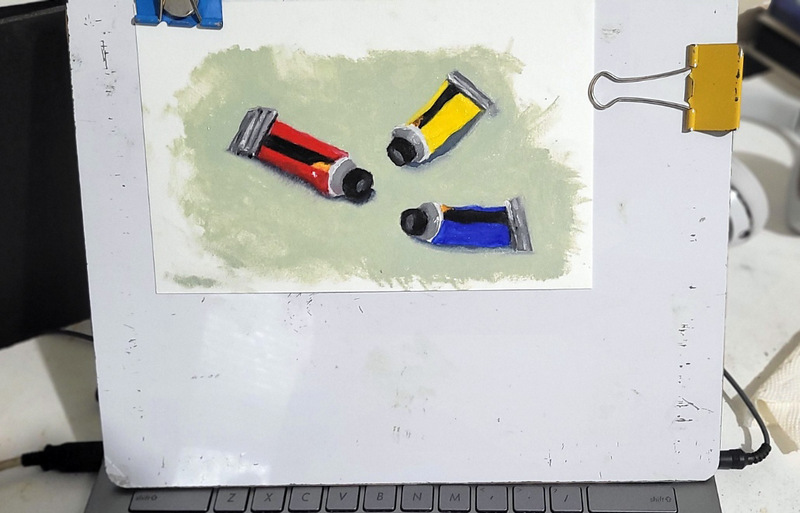I know that a lot of you think I’m nuts for suggesting the use of oil paints as a sketching medium. You’re probably right but the typical discussions of this is not the reason(s).
A sketching medium must:
- Be Light and portable
- Be easy to set up and take down
- Clean up must be simple.
- Must allow for relatively quick sketches
There may be other things but these are the major demands on a medium.
Numbers 2 and 3 are solved by using water-mixable oil paints. I use Cobra paints that feel just like Rembrandt oils if you’ve used those. No solvents or mediums beyond good old H2O. Requirement one requires a easel-less approach and while I’ve listed 4 separately, this mostly comes from items 2 and 3.
But in addition to water-mixable oils, you need a substrate that’s light and that doesn’t need a lot of support. And that’s where Legion’s new Stonehenge Oil paper comes in. Here’s a really quick test to see how well it solves the problem of oil paint sketching. Please excuse the horrible painting. I spent only 15 minutes on this, probably using too large of a brush, but the painting is not the result here, it’s paper performance that’s important here.
I wanted to test how this paper accepts a pencil sketch. Several of the “Canvas pads” typically sold for oils are horrible for drawing. Stonehenge oil is the opposite. Its 140lb paper surface feels like you’re drawing on Stonehenge drawing paper, which is wonderful. Here’s my sketch and the subject.
My typical way of drawing is to use a 9×12 drawing board with a metal surface so I can use magnets to attach things like paint palettes and water containers. So, it seemed natural to use the same thing for this test. I also decided not to tape the paper down because I’m lazy and often I just clip my sketchbook to the board and draw. I did the same here, with a single clip.
Several things to note here. There was NO curling of the paper as I painted. Whatever treatment Legion does to the paper causes it to remain flat and prevents any oil from penetrating through to the other side. Painting on it feels very similar to painting on a masonite panel covered with gesso. It’s just a LOT lighter. This is an amazing new product for oil painters in my view.
Will I become an oil paint sketcher? Maybe? Probably? I like the idea and I prefer oils to gouache that some find a great sketching tool. But I still look at paintings that lack ink lines and think that something is missing. Time will tell. What I do know is that I’ll be buying more Stonehenge Oil paper when it becomes available in Canada.






